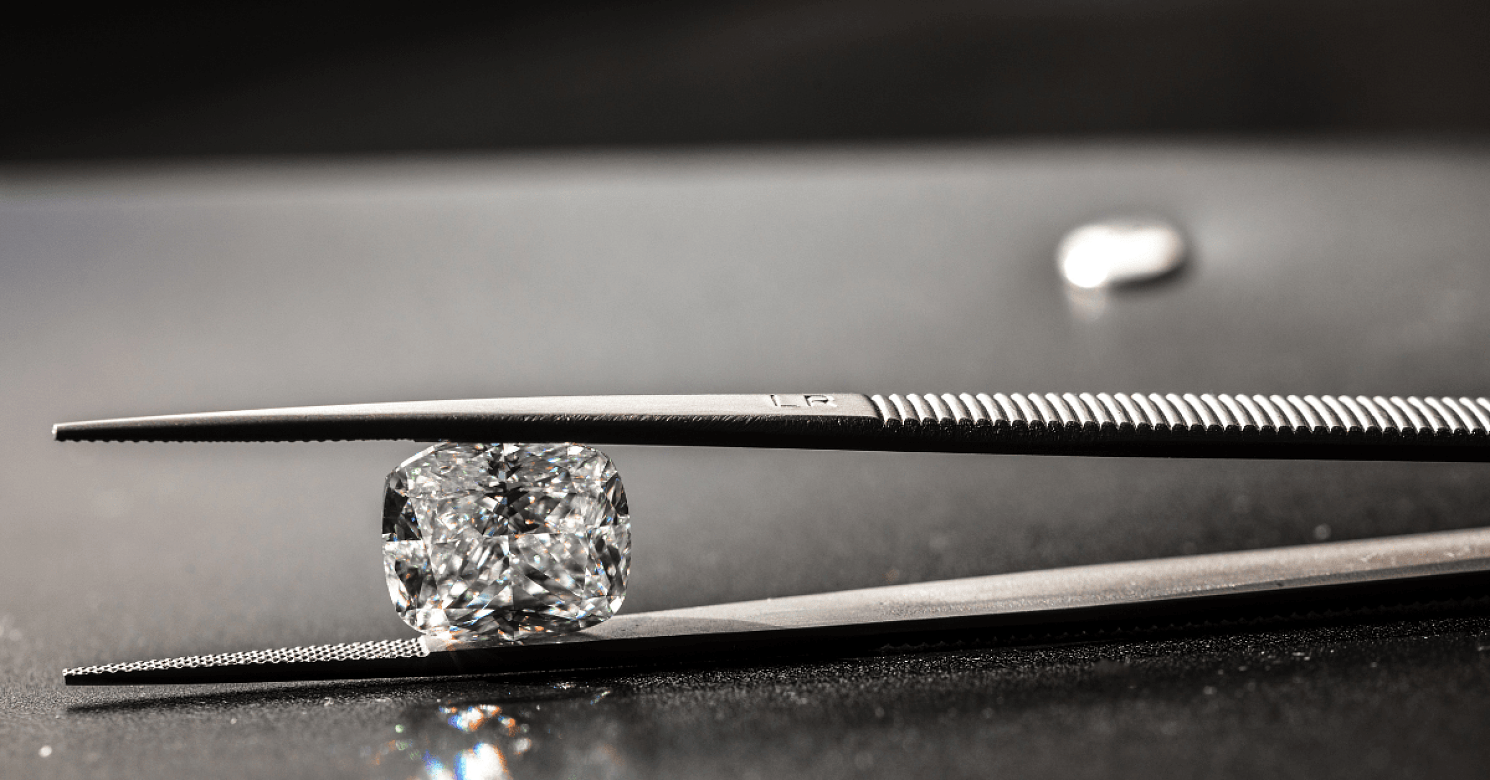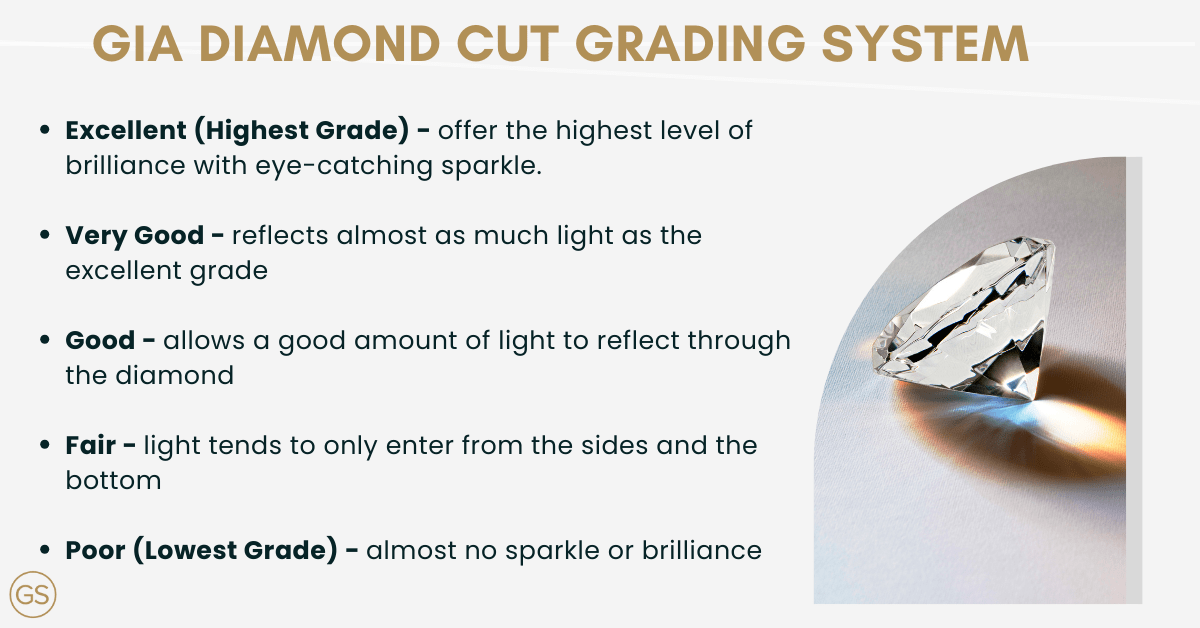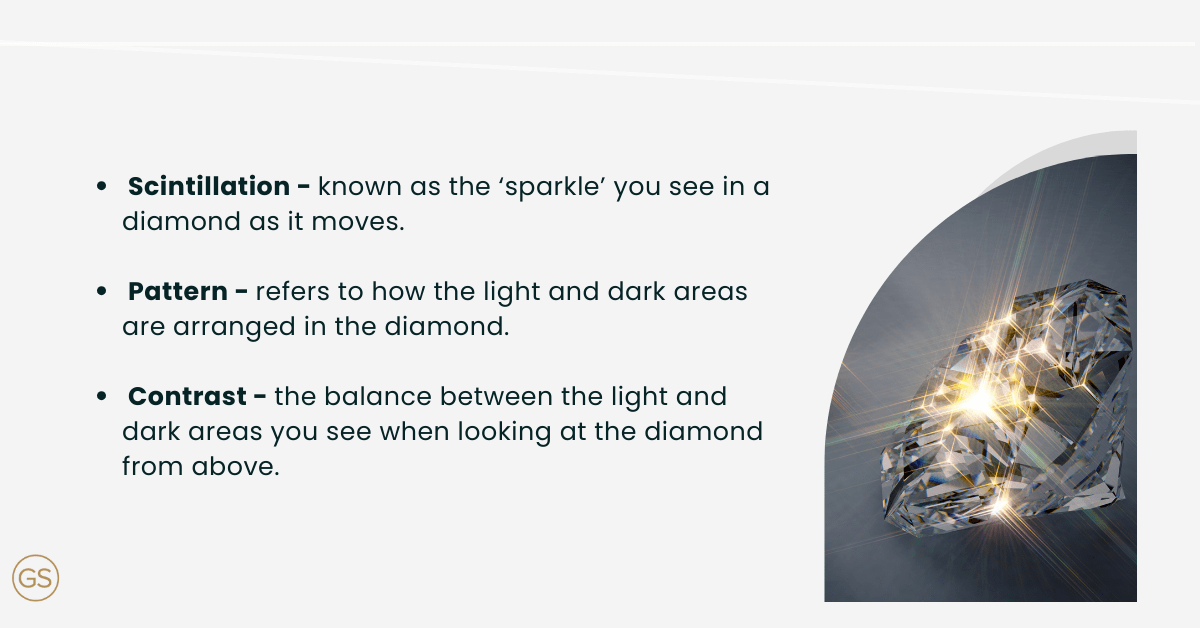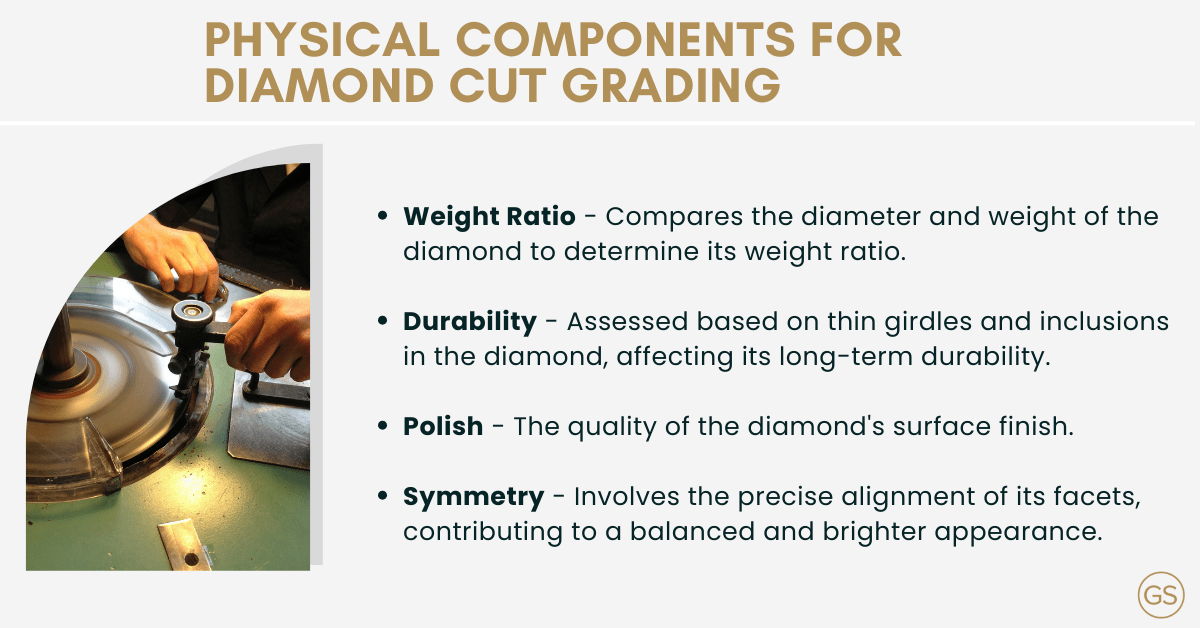
This guide explores how different grades of diamond cuts are assessed and graded according to the quality of their cut. This diamond cut grading system from the Gemological Institute Of America (GIA) plays a key role in determining the quality and value of a diamond.

Back in the 1950s, the Gemological Institute Of America (GIA) developed a universal system for grading diamonds based on colour, clarity, cut, and carat. The system which we now know as the Four 4Cs for diamond grading has become an invaluable tool for the industry. In essence, the new grading system unified how diamonds were graded and created consistency in the market for retailers and consumers.
As far as grading the individual aspect of diamond cut went, there was still improvements to be made. Fast forward more than half a century to 2005, the GIA introduced the diamond cut grading system. The new grading system was the culmination of more than 15-years of research and studies into how light behaves around a brilliant round cut diamond. Over the course of the research, the GIA used computer modelling and analysed more than 70,000 human subjects to determine the most ‘appealing’ diamond cut.
The outcome is that today we have five distinct diamond grades that are used to determine the quality of the different cuts. These grades play an important role in determining demand which drives price and market value.
The GIA assigns one of the following five grades when determining the quality of diamond cut.
1. Excellent (Highest Grade)
Excellent is the highest grading for diamond cut. Diamonds that are rates as excellent for cut offer the highest level of brilliance and reflect almost all incoming light to create a brilliant, eye-catching sparkle. As far as diamond cut goes, buying a diamond with the “excellent” grading for cut is a money-is-no-object purchase that reflects the desire for the best above all else.
2. Very Good
Diamonds with the “Very Good” rating for their cut reflect almost as much light as the excellent grade but offer a more accessible price point. Diamonds that achieve this level of cut grading are a cost-friendly access point to some of the best diamond cuts in the market.
3. Good
Diamonds with the “Good” cut grading allow a considerable amount of light to reflect through the diamond for an attractive sparkle. These diamonds are partially well-cut and preserve most of the natural beauty of the diamond, however, they do not reflect all of the light. It’s not unusual for buyers shopping in the “good” grade to make some concessions on the quality of the cut in order to stretch to a larger stone.
4. Fair
Diamonds graded as “Fair” only show a slight level of brilliance as light tends to only enter from the sides and the bottom. For those shopping for smaller carats, this might be less of an issue. With that said, it’s not usually recommended to buy a diamond with a grading of “Fair” if you’re looking for significant sparkle and brilliance.
5. Poor (Lowest Grade)
Diamonds that are graded as “Poor” for their cut typically yield almost no sparkle or brilliance. Poor cut diamonds are an entry point to the diamond market, however, are generally not recommended for those that are looking for sparkle and visual appeal.

When we look at the different components that make up the grade given to a diamond for its cut, the GIA provides seven different components. Three of these are based on visual cues, and four are based on the physical components of the diamond.
Scintillation refers to those tiny areas of light in a polished diamond that create the ‘flash’ effect as the position of the diamond moves. The other component here is ‘negative scintillation’ which refers to the dark centres and the dark upper girdles in the stone.
The layout of the dark and light areas of the stone are known as the ‘pattern’ which is responsible for the internal and external reflections that occur when light hits the diamond.
The contrast is the final visual criteria that is used to grade the cut of the diamond. In simple terms, the contrast simply refers to the relief of dark and light areas that create the ‘face up’ pattern that is synonymous with diamonds.
The weight ratio of the diamond refers to the comparison of the diameter against the weight of the stone. This formula is used to determine the weight ratio of the diamond.
The durability of the cut is determined by thin girdles and inclusions which can weaken the stone and may result in compromised long-term durability.
The overall polish of the diamond is a key visual cue that is used to determine the cut grade of the stone. Factors such as any scratches, chips, or visual marks will determine the quality of the polish.
Symmetry refers to the outline of the diamond, as well as how precisely the different facets of the face intersect and align. A more symmetrical cut helps with creating a balanced appearance, as well as creating a brighter appearance.

The lab grown diamond market is growing rapidly. Recent estimates indicate around 20% of all new diamonds sold are lab grown. The growth of this segment is driven largely by improvements in technology, as well as the market’s desire for ethical diamonds. As the popularity of lab grown diamonds continues to grow, it raises new questions for consumers. Questions around how they are graded and what drives their value are the most obvious questions that would-be buyers of man-made diamonds are asking.
It’s quite simple, lab grown diamonds receive the same grading reports based on the 4Cs of cut color, clarity, and carat weight. Just like mined diamonds, lab grown diamonds are assessed for their cut based on the same principles as their natural counterparts. Despite being made in a controlled environment, different manufacturing and quality practices mean that lab grown diamonds are subject to the same discrepancies in quality.
If you’re shopping for a lab grown diamond, the visual and physical cut grading criteria still apply.
For buyers, understanding how different diamond cuts affect value is an essential piece of information. The GIA’s diamond cut grading system isn’t just about maintaining consistency in the market, it’s about empowering buyers with an easy-to-follow guide that allows them to shop for diamonds with confidence.
At GS Diamonds, we recommend a Triple Excellent grade (in cut, polish, and symmetry) for round brilliant cut diamonds. Fancy-shaped diamonds have more leeway with cut grading — an Excellent - Very Good grade for polish and symmetry is what constitutes the best results.